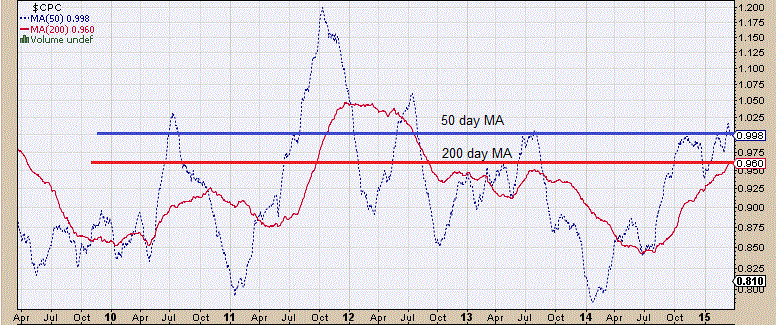What follows is a section from the “Thoughts & Analysis” portion of my monthly letter to investors at T11 Capital.
The theme of small-cap outperformance is one that I highlighted specifically in the October client letter. Numerous statistical studies were presented at that time pointing to a small-cap market that had a tremendous amount of reward in exchange for an insignificant amount of risk going forward.
Since the beginning of October the Russell has gained 13.71% vs. the S&P 500 which is up 4.87%
On a purely technical basis, the Russell is equivalent to the Nasdaq in its demonstration of strength thus far in 2015. These are all signs of a healthy market advance that is predicated upon rotation among asset classes by investors. The fact that investors continue to remain discerning in their portfolio choices throughout the current bull market indicates a level of responsibility that should not be overlooked.
It is in responsibility among investors that sustainable advances take place. It is in irresponsibility on the part of investors that unsustainable advances turn into intermediate to long-term market tops. The thinking behind this is that when you have all classes of investors simply throwing their cash at every asset class regardless of risk/reward then investors are disregarding risk, thus setting up the market for increased volatility that typically results in a mass realization, at some point in the near future, that an exit should be made from stocks into safer assets.
There is not even an inkling of this foolhardy behavior among the current class of investors. For example, the technology sector is successfully separating robust business models from business models that are questionable in their ability to provide long-term growth. There is no blanket mentality towards investment that demands social media, software or mobile names regardless of price, growth prospects or management ability. Companies that deserve to experience growth in share price are experiencing growth in share price. Companies that do not, have been lagging behind.
Additionally, the appetite for portfolio hedges remains undaunted despite one of the most steady increases in major averages over the past several decades. The combined put/call ratio is sitting at levels that aren't too far off where we started this bull market, in terms of the voracious hunger for put buying over exposure to calls.
In the chart above, the 50 day moving average of the put/call ratio is at its highest point in more than 2 years. The longer-term 200 day moving average is at its highest point in nearly 3 years, with only the European crisis of 2011 seeing a higher amount of pessimism as expressed through put buying.
This tells of some urgency on behalf of market participants to gain protection into ever rising equity prices. These are the same market participants who have been doubting this market since day one. I don't see the market giving this group any satisfaction without first rewiring their mindset through a continued persistent rise to levels few believe are possible at this juncture. This is a multi-year process taking place over the next several years.
Secular bull markets end on absolute conviction on behalf of all investor classes that equity prices have near infinite potential for future appreciation. This becomes especially pronounced among the retail class, which piles into speculative names regardless of fundamentals causing dramatic price appreciation to take place across numerous sectors. At the same time, conservative investments are shunned as if they carry the bubonic plague.
In 1999 Warren Buffett's philosophy of conservative investing in reliable, well known brands over a long-term time frame was scoffed at by professional and retail investor alike. His underperformance in those years was directly attributable to the fact that investors completely abandoned nearly every asset class in favor of speculative technology related names.
In 2015, we are coming off a year where bond funds managed to attract more investor demand than equity funds. Last year bond funds attracted $44 billion in assets while equity funds saw inflows of just $26 billion. Given that mutual funds are an asset class that is primarily retail driven, this tells us a lot about where the mindset of the average investor lies.
This current secular bull market has proven to be one of the most resilient ever. That resiliency in the face of retail investor disgust and mistrust of the U.S. financial markets should send a pleasant tingle up the spine of the astute investor.
While I do not know when the end of this run will come about. I do know that we are nowhere close to a long-term top at present. And that's all the information I need with respect to the general market.
The puerile data offerings that are grandiloquintly offered to eager investors on a near minute to minute to basis are best left to those seeking everything from the market except returns.
“Win or lose, everyone gets what they want out of the market.” ---- Ed Seykota
Regards,
Ali Meshkati

